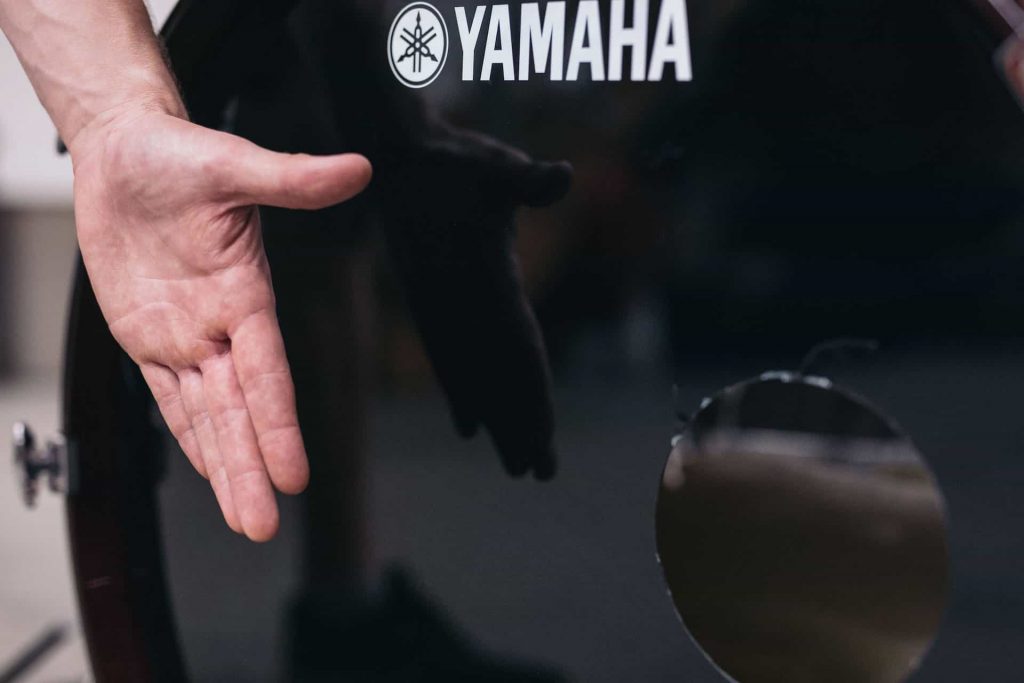Ribbons have historically excelled at capturing a great kick drum sound; veteran engineers always reach for a ribbon mic when trying to capture a massive, detailed kick sound. The near-field N22 is no exception to that legacy. Its extended top-end, 3k response bump, and balanced low-end make it the perfect tool for capturing a kick drum with limited room reflection.
The near-field N22 delivers balanced sound 2 to 16 inches from the source with the help of internal mechanics which roll off the low-end of a signal before it hits the ribbon. This feature allows for better performance in close-up recording applications than one would achieve with more traditional ribbon mics due to their proximity effect.

The Hand Test
To ensure that the N22’s ribbon will not be damaged by strong blasts of air from your instrument, place your hand near the source and move it away until you can’t feel moving air, then place the N22 in that position.
As an additional precaution, you can tilt the N22 slightly upward, thereby relieving the ribbon of some tension and allowing it to accept slightly greater air impact.
A pop screen between the mic and the source or the NUVO Windscreen is another method for preventing potential ribbon damage.
